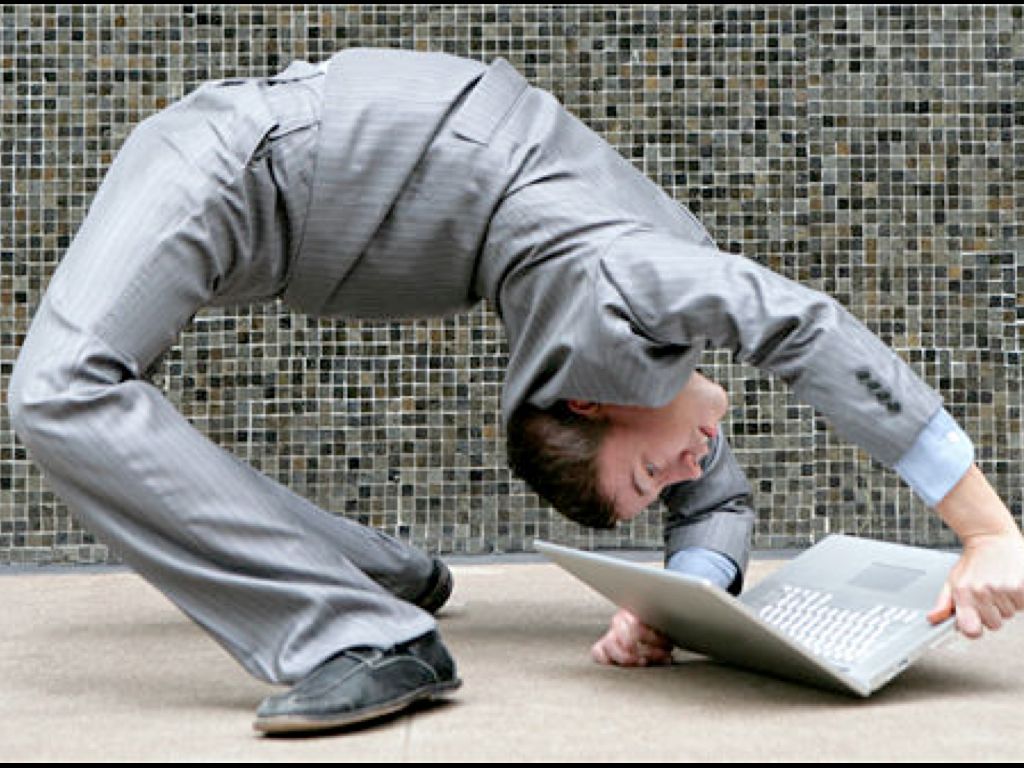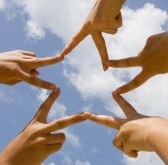The Agile Leader's Toolkit
 For deep sustainability to have legs, teeth and even hair, we need an organisational ethos which promotes fluidity and adaptability. There has been much talk of the current need for agility in organisations and according to McKinsey how in the next five years it will become even more critical. But what exactly is Agility and as a leader how do you practice it? To my mind, the notion of Agility is an umbrella term for a set of leadership capabilities that I think serve as a prerequisite for developing high impact leadership practices today.
Counter to popular belief, one does not match the speed of the environment by trying to “just go faster”. An agile leader does not respond to a faster moving business environment by trying to match the speed thereof. Instead they work with a different order of things, finding ways to adjust their own behaviour and perspective. As Rumi said, “Yesterday I was clever, so I wanted to change the world. Today I am wise, so I am changing myself”. Agile leaders are leaders who are able to reflect, see possibilities and reframe their thinking constantly. They understand the importance of adaptability, grace in failure, curiosity, collaboration, back up, diversity, ease of access and the ability to forecast. By slowing down to build the practices which deliver results in today’s environment they are able to match the pace required.
For deep sustainability to have legs, teeth and even hair, we need an organisational ethos which promotes fluidity and adaptability. There has been much talk of the current need for agility in organisations and according to McKinsey how in the next five years it will become even more critical. But what exactly is Agility and as a leader how do you practice it? To my mind, the notion of Agility is an umbrella term for a set of leadership capabilities that I think serve as a prerequisite for developing high impact leadership practices today.
Counter to popular belief, one does not match the speed of the environment by trying to “just go faster”. An agile leader does not respond to a faster moving business environment by trying to match the speed thereof. Instead they work with a different order of things, finding ways to adjust their own behaviour and perspective. As Rumi said, “Yesterday I was clever, so I wanted to change the world. Today I am wise, so I am changing myself”. Agile leaders are leaders who are able to reflect, see possibilities and reframe their thinking constantly. They understand the importance of adaptability, grace in failure, curiosity, collaboration, back up, diversity, ease of access and the ability to forecast. By slowing down to build the practices which deliver results in today’s environment they are able to match the pace required.
I have developed a toolkit which I hope could serve as a checklist for organisations who are interested in constructing sustainable leadership practices in their organisations - a sustainability which is both palpable in the conversations which their employees have but one which also drives the operations and the decision making processes their leaders engage in daily.
In order to build Agility into the DNA of one's leadership practice, there are nine things which I think are required. I have tried to list these from A-I for ease of reference:
Adaptability Back Up Curiosity Diversity Ease of Access Foresight Grace in Failure Hubs Inclusiveness
Adaptability (Flexibility): We need to be ready to change our plans when they are not working the way we expected. In a world where the rate of change happens faster than our ability to respond to it, how do we change course mid direction? We need to build a healthy robustness around how we are going to react. We can no longer count on things remaining stable. The question is how have you created alternatives for yourself.
Sappi for me, is an interesting case in point. The largest producer of coated fine paper in the world, when faced with a downward trend in their market, went out and bought the second biggest producer. Instead of genuinely engaging with what they could do differently, there seems to be an embracing of more of the same. It has not helped to bolster their share price. The reality is, that it is no longer the survival of the fittest but those who are more able to be responsive to change who survive. What are the ways in which you can nurture your own ability to adapt? Bruna Martinuzzi is worthwhile reading on some quick wins on developing your own adaptability.
Backup (Redundancy): Backup, backup, backup. Perhaps the cardinal rule for an agility based economy is to never leave yourself with just one path of escape or rescue. Eskom, our very own generator of approximately 95% of electricity in South Africa, is a case in point. Faced with a backload of energy shortfall, Eskom has taken on a US$3.5 billion debt to the World Bank to build a coal smelter - which is teneted on old technology and directly generates disastrous environmental consequences for us. Says South African professor Patrick Bond: "South Africa's five-fold increase in CO2 emissions since 1950 and 20% increase during the 1990s, can largely be blamed upon the attempt by state electricity company Eskom, the mining houses (led by Anglo American) and huge metals smelters (especially BHP Billiton) to brag of the world's cheapest electricity. Emitting 20 times the carbon tonnage per unit of economic output per person than even the United States, South African capital's reliance upon fossil fuels is scandalous." A quick solution based on an immediate gratification but one which I believe will have long term implications for our labour market and export sector. Failure to back up in the demand side of their business has resulted in an economic debt which will have dire social implications.
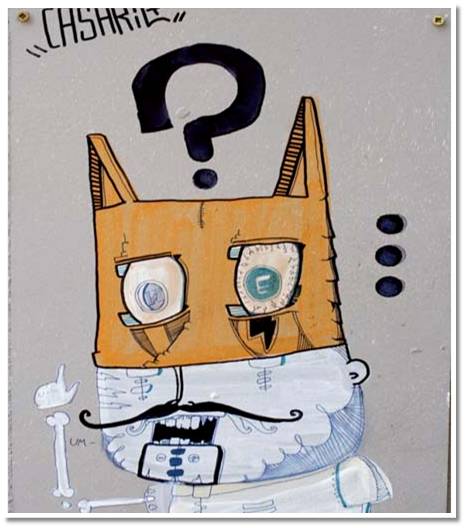 Curiosity
Curiosity cues our attention. It provides a lens for what we focus on. It emerges when the mental model we use currently is disrupted. One may have one of two responses - judgement or curiosity. Judgement will shut down new possibilities whereas curiosity will allow one to see other alternatives. As it requires that one’s way of seeing be challenged it more often than not demands that we look outside of the discipline we know to see other alternatives. According to Todd Kashdan (2009), lack of curiosity is a breeding ground for stereotyping and discrimination, inflated confidence and ignorance that can lead to poor decision making, dogmatism and rigidity of thought. An agile leader is a curious leader.
Curiosity
Curiosity cues our attention. It provides a lens for what we focus on. It emerges when the mental model we use currently is disrupted. One may have one of two responses - judgement or curiosity. Judgement will shut down new possibilities whereas curiosity will allow one to see other alternatives. As it requires that one’s way of seeing be challenged it more often than not demands that we look outside of the discipline we know to see other alternatives. According to Todd Kashdan (2009), lack of curiosity is a breeding ground for stereotyping and discrimination, inflated confidence and ignorance that can lead to poor decision making, dogmatism and rigidity of thought. An agile leader is a curious leader.
Diversity: If you don't rely on a single kind of solution, you won't suffer from a single point of failure. This is perhaps the greatest and most significant contribution South Africa, as a nation can offer. After all, it is embedded into our ecolological DNA. Take Fynbos. In the Western Cape alone, there are 2200 species on Table Mountain. They coexist harmoniously and if after 8 years, if they don't experience fire, they die. Multiple perspectives allow multiple entry and exit points to challenges we are facing. If we don’t face the fire of our judgement and opinions the likelihood of them surviving is questionable. And perhaps the measure should be having your ideas questioned every 8 hours rather than every 8 years.
Ease of Access: Don’t hide your systems-transparency makes it easier to figure out where a problem may lie. Share your plans and preparations, and listen when people point out flaws. I think Michael Jordaan of FNB is a shining example of this. As the CEO of one of the biggest banks in South Africa he has an active Twitter presence where he can share new developments in his market and quell fears regarding network breakdowns. The downside is that I have seen him have to be online at close to midnight giving systems updates and gets asked questions like what is the branch code for little known areas> However what  this ease of access has allowed is for FNB to stand out as a pioneer in what the worth of transparency is and what it can do for your brand.
this ease of access has allowed is for FNB to stand out as a pioneer in what the worth of transparency is and what it can do for your brand.
Foresight: As Nassim Taleb said, if we only knew how closely the word ‘prophecy’ and ‘foresight’ were aligned in Semitic languages we would be less confident about our abilities in that arena. You can’t predict the future. But as Bobby Godsell wisely said, “you can hear its footsteps approaching”. Think and prepare. It reminds me very strongly of the Truth & Reconciliation Commission set up in South Africa post independence. Nobody knew what the fallout of a devastating system of oppression would be, but introducing a systemised process which allowed people to share their stories in some small way eased a piece of the enormous burden of this history. The question to ask is what sort of practice can you build into your own leadership behaviour which builds an awareness of the foresight which might be required as an agile leader?
Grace in Failure: Failure happens, so make sure that a failure state won’t make things worse than they are already. In fact according to Thomas Watson, founder of IBM, "If you want to succeed, double your failure rate". The story of Mxit has always been an inspirational one for me. The genesis of Mxit was a multi player gaming platform. Scripts had been developed, actors cast. When tested with their user base the overwhelming response was that people wanted a place to talk and share on mobile. Instead of fighting the need, the developers humbly listened to their followers and built what has become the largest social network in Africa.The acceptability of this is so common now that Silicon lexicon has introduced a word called Pivoting for it. What you start with will probably not be what you end up with. Instead of seeing this as a failure it is instead a sign that you are on the right track.
Hubs (Decentralization): Centralized systems look strong, but when they fail, they fail catastrophically. The recent rumblings of consolidating all the provinces into one centralised system strikes somewhat of a warning bell. There has been much debate around the value of matrix organisations and decentralised units. What allows a decentralised system to perform is when it has a centralised node of trust. Agility demands that there been an alignment between principle and action. Centralisation without trust is a potentially catastrophic fail.
 Inclusiveness (Collaboration): The reality is that we are all in this together. Take advantage of collaborative technologies, especially those offering shared communication and information. I think the open source operating system built from Linux core architecture called Ubuntu led by SA tech billionaire Mark Shuttleworth is an inspiration. The open source approach enables the OS to develop in line with the market needs, as it develops and grows through various contributing developments and thus 'scratching their own nearby itch'. Although the software is free, the premium offerings , like IBM come at a fee. This collaborative, 'the more you share, the more you win' approach has generated extraordinary results for both business and education. Coursera is another exciting new development with a host of Ivy league schools in the States creating 123 free online offerings by seasoned academics like Dan Ariely whose course on Irrational Behaviour I look forward to taking in March 2013.
Inclusiveness (Collaboration): The reality is that we are all in this together. Take advantage of collaborative technologies, especially those offering shared communication and information. I think the open source operating system built from Linux core architecture called Ubuntu led by SA tech billionaire Mark Shuttleworth is an inspiration. The open source approach enables the OS to develop in line with the market needs, as it develops and grows through various contributing developments and thus 'scratching their own nearby itch'. Although the software is free, the premium offerings , like IBM come at a fee. This collaborative, 'the more you share, the more you win' approach has generated extraordinary results for both business and education. Coursera is another exciting new development with a host of Ivy league schools in the States creating 123 free online offerings by seasoned academics like Dan Ariely whose course on Irrational Behaviour I look forward to taking in March 2013.
We live in a world with high degrees of complexity, uncertainty and inequality. In order to be able to do effective, meaningful and impactful work we require a different set of leadership practices. I would be curious to hear about some of the leadership practices you have started to build to make agility a daily part of your leadership toolkit.
How Gaming helped me become a better strategist
 In the last five years, I can safely say that the majority of what I have unlearnt and relearnt, as far as strategy is concerned, comes from Gaming. I have learnt many things about strategy from the world of work and higher learning but Unlearning and Relearning have come from a different place. When I understood that the rate of change was happening faster than my ability to respond to it strategically, I started looking for another place - somewhere I could dismantle my well worn paradigms and see with a fresh pair of lenses.
I think this desire to find an alternative space to improve my strategic capacity was also the need to embrace a way of thinking which was far more collaborative in nature and one which could take me as far away from Strategy as War as possible. I started losing my interest in beating the competition and all the metaphors tied into strategy as something which assumed generals on a battlefield planning the mighty overthrow. It didn't feel real anymore and was certainly not what I was seeing playing out in the markets I operated in.
In the last five years, I can safely say that the majority of what I have unlearnt and relearnt, as far as strategy is concerned, comes from Gaming. I have learnt many things about strategy from the world of work and higher learning but Unlearning and Relearning have come from a different place. When I understood that the rate of change was happening faster than my ability to respond to it strategically, I started looking for another place - somewhere I could dismantle my well worn paradigms and see with a fresh pair of lenses.
I think this desire to find an alternative space to improve my strategic capacity was also the need to embrace a way of thinking which was far more collaborative in nature and one which could take me as far away from Strategy as War as possible. I started losing my interest in beating the competition and all the metaphors tied into strategy as something which assumed generals on a battlefield planning the mighty overthrow. It didn't feel real anymore and was certainly not what I was seeing playing out in the markets I operated in.
Frankly, I am no longer that interested in the idea of competitors as a thing to study. Not because they don't exist but more because they come from places I am finding less likely to fathom. I believe that Executive Education is learning as a lifestyle. If I were to think about who my competitors really were, I would be more inclined to think of travel agencies offering exotic destinations or the hard choice our customers have between a homeloan or a student loan. For these are often the choices people are faced with when decided what to do with their hard earned cash and its relationship to their own personal development. I love the story about SABMiller and their realisation that their competition wasn't just Brandhouse but Vodacom because both of them were hustling for the same R20 - a prepaid voucher or a quart of beer.
Games have given me an extraordinary place to experiment. I would like to share the insights I have gained from four games I have played and unlearnt and relearnt from.
The first is Fable2. I have a particular fondness for this game because up until then I had been playing mobile games. A games console was not something I had ever considered owning and it was only after my partner and I decided that it would be amazing to play together rather than alongside one another on our phones that we bought an XBox. I genuinely believed it was something I would do intermittently to relax and never believed that it could add real value to the work that I did.
What Fable2 taught me about was the need for kindness and generosity in commercial exchange. The more of this behaviour I showed the cheaper the weapons became from traders who liked me, the more followers I could call on to help me battle all manner of dragon and rascal and the more accessible and affordable the potions became. A far cry from holding your ideas close, going it alone and screwing your competition.
Next is Dragon Age2. This taught me about the importance of Agility and the capacity to change course mid direction. As long as I was prepared to move off the well worn path and try other alternatives I would be rewarded with surprise treasures and at times rare weapons. It taught me that being adaptable wasn't being wishy washy and that it in many casees saved my life and that of my team. Here, too comaraderie played a role and the value of building trust in a team.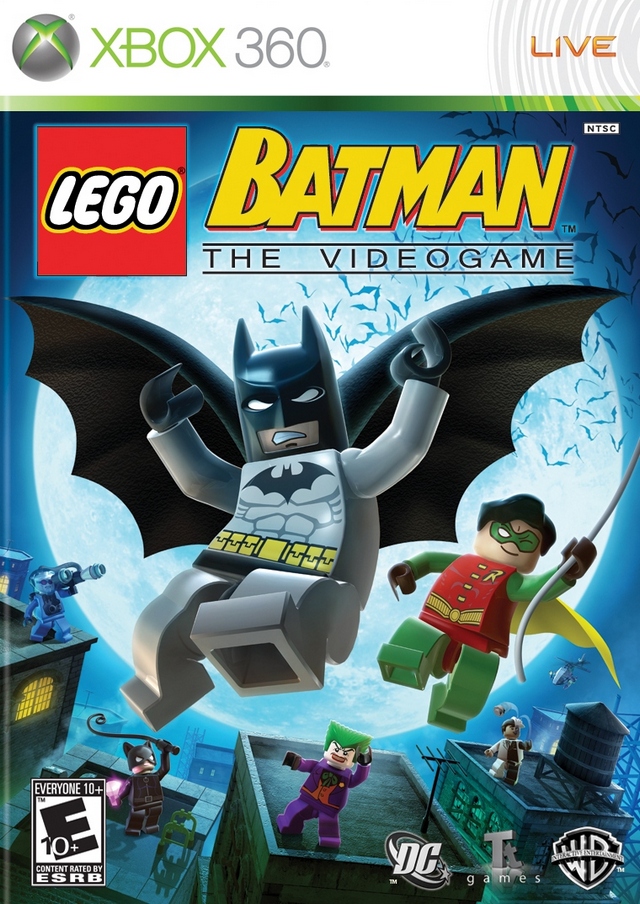
Lego Batman showed me that if I wasn't prepared to work with my partner that we would get nowhere. As the game doesn't allow you to move too far from one another, my partner and I had to focus on what we were trying to achieve together. It created a real trust in one another and we became sensitised to always checking whether the other party was okay or whether we needed to help them get to the place we both needed to be. This I think is an invaluable lesson for teamwork.
 Final Fantasy XIII taught me about Grace in Failure and the power of persistence. So much of our fear of failing is the belief that if we make a choice that the consequences will play out for the rest of our lives. I learnt here that choices, sometimes brave choices would result in me dying but that I could always respawn. In the real world this means that the risks I take might not always play out the way I want them to but that the possibility of reinvention is a real and energising one.
Final Fantasy XIII taught me about Grace in Failure and the power of persistence. So much of our fear of failing is the belief that if we make a choice that the consequences will play out for the rest of our lives. I learnt here that choices, sometimes brave choices would result in me dying but that I could always respawn. In the real world this means that the risks I take might not always play out the way I want them to but that the possibility of reinvention is a real and energising one.
To my mind, strategy is inextricably linked to leadership development. The time I have spent gaming has genuinely helped me to develop as a leader and I think as a result, a better strategist.
Truths, Trends and Trifles in Business Education - A Hacker's Guide
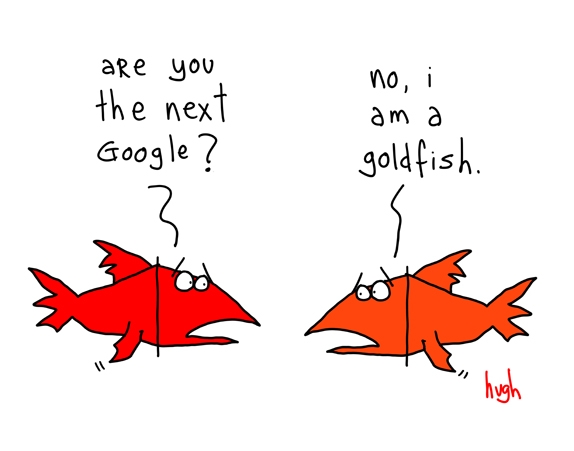 One of the most important issues we are currently facing as business educators, and certainly in the field of executive education is the ability to separate out the truths from the trends and the trends from the trifles. I am indebted to my partner, Dave Duarte for this elegant distinction between these three lenses. It is well worth reading his blog post on this as it relates to the problematics of Social Media strategies.
Truths
One of the most important issues we are currently facing as business educators, and certainly in the field of executive education is the ability to separate out the truths from the trends and the trends from the trifles. I am indebted to my partner, Dave Duarte for this elegant distinction between these three lenses. It is well worth reading his blog post on this as it relates to the problematics of Social Media strategies.
Truths
 The truth of what it is that you do will have an element which is unchanging. What is is in the nature of your work that is fixed and utterly aligned to your purpose? In my work it is the understanding that for leaders to have impact they need different practices - the ability to manage their energy and attention, working with questions rather than answers, seeing themselves as coaches and resources rather than controllers. This is the "why" of the work that I do. It is useful to spend an inordinate amount of time to really get to the nub of your why. In going slow to go fast here you really do create a landscape that you can align emergent trends around.Another way of articulating the "why" is perhaps around the idea of Purpose.
The truth of what it is that you do will have an element which is unchanging. What is is in the nature of your work that is fixed and utterly aligned to your purpose? In my work it is the understanding that for leaders to have impact they need different practices - the ability to manage their energy and attention, working with questions rather than answers, seeing themselves as coaches and resources rather than controllers. This is the "why" of the work that I do. It is useful to spend an inordinate amount of time to really get to the nub of your why. In going slow to go fast here you really do create a landscape that you can align emergent trends around.Another way of articulating the "why" is perhaps around the idea of Purpose.
Trends
Trends, on the other hand, are what are appearing on your horizon that are creating shifts in behaviour and will impact on the work you do. Trends are the "What". A trend is something which you can choose to see and align to your Why. Not every trend will be meaningful to the work that you do but if you can pick two or three things that have impact these are the ones to spend time on crafting alignment and responses. In my world, the trends that impact on what I do are the drive for responsible leadership, the attention economy, information overload, learning on demand, and the upsurgence of collaborative technologies. Understanding the importance of these trends allows me to craft responses that may well be meaningful in my search to help leaders bild practices that help them achieve greater impact - like using Curiosity as a lens to filter the quality of our attention, building a model around Productive Presencing which helps us manage our attention and energy at work, constructing an attention audit to help engage with negative voices in our heads and agility as a leader's toolkit for building practises that help us change course mid direction and encourage the perspectives of others in our decision making. Trends generally have upwards of a 15 year lifespan which means that their impact is significant.
Trifles on the other hand are those fabulously sexy tools which are here today, gone tomorrow. Like Zite, or Foursquare, Ning, Facebook or Twitter. They are the "How" of what it is we do - applications which we can use expediently to get our message across but which we can equally abandon for another platform which might serve us better at a later stage. One of the issues with the age we live in is that we are just too busy to make these distinctions and often risk pouring an enormous amount of energy and capital into trifles rather than the alignment of particular trends with our truths. Overinvesting in a trifle hurts your business and erodes your truth. Often the mistake trendforecasters make is to focus on the trifles whihc three years down the line are gone.
It is my hope that these three lenses will serve you well in your own decisionmaking around what to track and what to use. As a hack, it is really just about remembering what is the Why (Truths), what is your What (Trends) and what is your How (Trifles). In an information-rich world this might well be an important filter.
Happy hacking.
A talk to be given tomorrow at the EFMD Annual Conference in Brussels, Belgium.
When Work no longer works
 I remember when Work was the place you went to, to get things done. Increasingly I find that when I really have to get things done - which in my industry is coming up with new ideas and designs for executive leadership development work (apart from managing a whole lot of people and bringing in revenue), work is probably the last place I would think of to do this well. Why is this? Well, frankly work is the place where I am interrupted a lot by others, where unexpected demands happen and where there is little time to think slowly, deeply and well. For a truly wonderous and succinct description for the world of work as interruption, Jason Fried's talk at TED on why work doesn't happen at work is a gem.
I have become interested in this because I have to give a plenary session in two weeks time at The Future of Learning conference - a crosss continental initiative hosted by Ashridge, Melbourne Business School and UCT GSB.
I remember when Work was the place you went to, to get things done. Increasingly I find that when I really have to get things done - which in my industry is coming up with new ideas and designs for executive leadership development work (apart from managing a whole lot of people and bringing in revenue), work is probably the last place I would think of to do this well. Why is this? Well, frankly work is the place where I am interrupted a lot by others, where unexpected demands happen and where there is little time to think slowly, deeply and well. For a truly wonderous and succinct description for the world of work as interruption, Jason Fried's talk at TED on why work doesn't happen at work is a gem.
I have become interested in this because I have to give a plenary session in two weeks time at The Future of Learning conference - a crosss continental initiative hosted by Ashridge, Melbourne Business School and UCT GSB.
The irony is that as I write this, it is not from work. I am doing this from home today - where I generally think very well. The topic of my paper is Learner Readiness -which within this context is rather paradoxical. If we no longer work well at work, where else are we learning and what kind of readiness for learning should we be building? I am in agreement with the move towards learning as a lifestyle and Dave Duarte's superb insightson this - where learning is a way of being, not just something which happens in very particular places - but rather as something which is part of what we do in multiple spaces to be enriched and fulfilled human beings.
Remember that old chestnut, the 70/20/10 Model which said 70% of learning happens on the job, 20% comes from observing and working with role models at work and 10% comes from formal training. What do we do now when increasingly, what we teach impacts people in their personal and professional lives? The model does not allow for home as a place of learning. Neither does it allow for the very real impact of coaching would would perhaps change the 20% rule significantly. I would say that today 10% of learning happens at work, upwards of 50% through coaching - either executive or peer and that upwards of 40% happens in those other places where home is a significant player - because with the addition of new technologies -we are no longer able to discretely box 'work' into the thing we do at the office.
I think this shift has a significant impact on what we design for organisations when it comes to their leadership development and critically when it comes to building learner readiness because it is no longer readiness just for the office but in actual fact readiness as a way of engaging in the world through the multiple places where we learn continuously.
The Art of Noticing
Noticing is a skill which is seen as central to creative literacy. Could it also be that it is a practice which is critical to business success? I think that it is. The problem though with the rate of change happening faster than our ability to respond to it is that many of us just seem to want knuckle down and get on with it, using the well worn filters and models which worked in the past and pray they serve us well in the future. The challenge is that we are living in a world where "time sickness" (the belief that there is not enought time and that it running out for us) is a real anxiety generator and thus any extra time required to practice a way of seeing things differently is viewed by many as just too overwhelming. In an informal poll done with delegates on our executive education courses at UCT GSB, many stated that they were working longer hours, taking shorter breaks and multi tasking just to try and keep up with the sheer volume of information they were confronted with daily. As many of you will know, I am working on the notion of Curiosity as an enabler of learning and as a filter for our attention. But what of the art of noticing? What has become clear for me is that conscious noticing is not easy. It requires energy and practise. In it's own right, noticing is an act of attention. Noticing, like Curiosity, is an appreciating asset. What I am particularly interested in is the way in which how we notice things differently will start informing our own leadership practices.
It is my belief that other discplines often provide extraordinary insight for crafting and understanding questions we might not have fully birthed. In the current world of augmented reality, designers craft avatars and characters that live not in the full focus of one’s vision but to the side – at a glance (Slavin, 2009; Cerveny, 2009). This can be much more efficient than fully parallel approaches to pattern recognition. The art of the glance is a useful exercise to practice when attempting to notice things outside of one’s normal area of perception. In fact, according to Schmidhuber (1991), humans and other biological systems use sequential gaze shifts to detect and also recognise patterns. This peripheral vision gives rise to residual objects which exist alongside of us but which are seldom noticed. Simply put, what are you noticing from the corner of your eye that you would usually filter out, but could possibly give opportunities for seeing differently? How can this way of seeing improve your capacity as a leader - when so much of the literature tells us to have a clear and uninterrupted focus.
I don't have the answers to these questions but I am priviliged to be working with Dave Bond, who is the Director of the Leadership Centre at Ashridge Business School in the UK on a new three day programme entitled The Art of Noticing - Fresh Eyes for New Opportunities which will be run in October at the GSB and explore some of these challenges.
I am genuinely excited by the possibilities this can generate for more effective leadership and the opportunities it can help us as leaders generate in our own businesses and practices.


